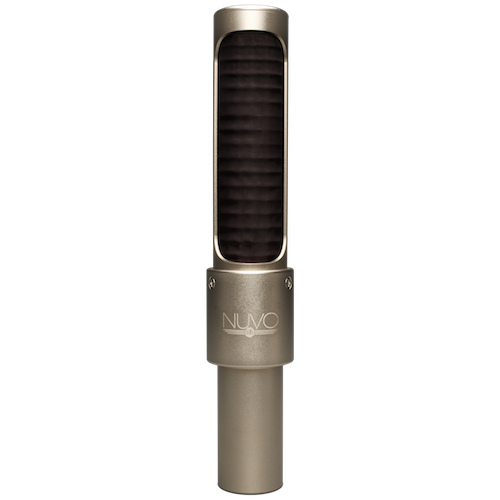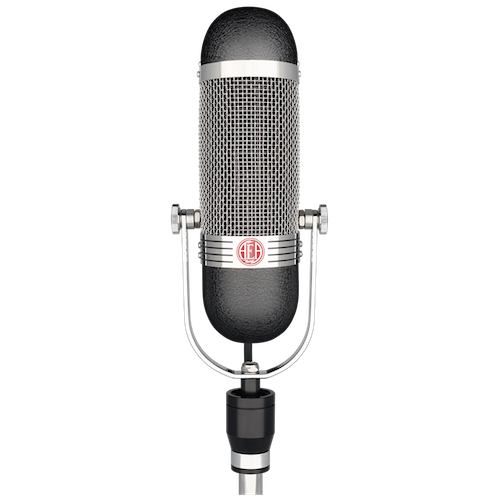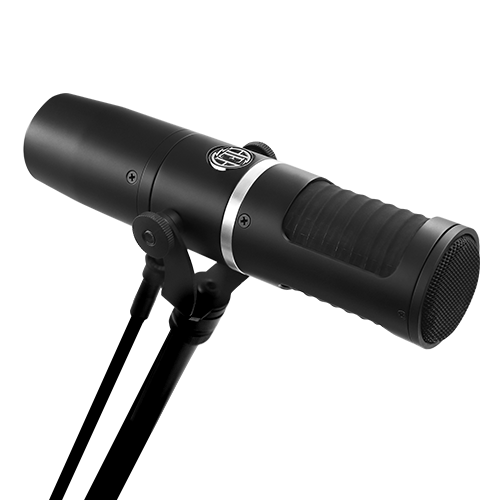Since their invention in the 1920s, ribbon mics have been used to record just about any instrument in any setting. Many instruments demand the tonality provided by ribbons, but many people have misconceptions about what those instruments are. You may be surprised by the unexpected ways a ribbon mic can be used.
Four Places You Never Thought of Using A Ribbon
Think You Can’t Use A Ribbon? — Think Again!
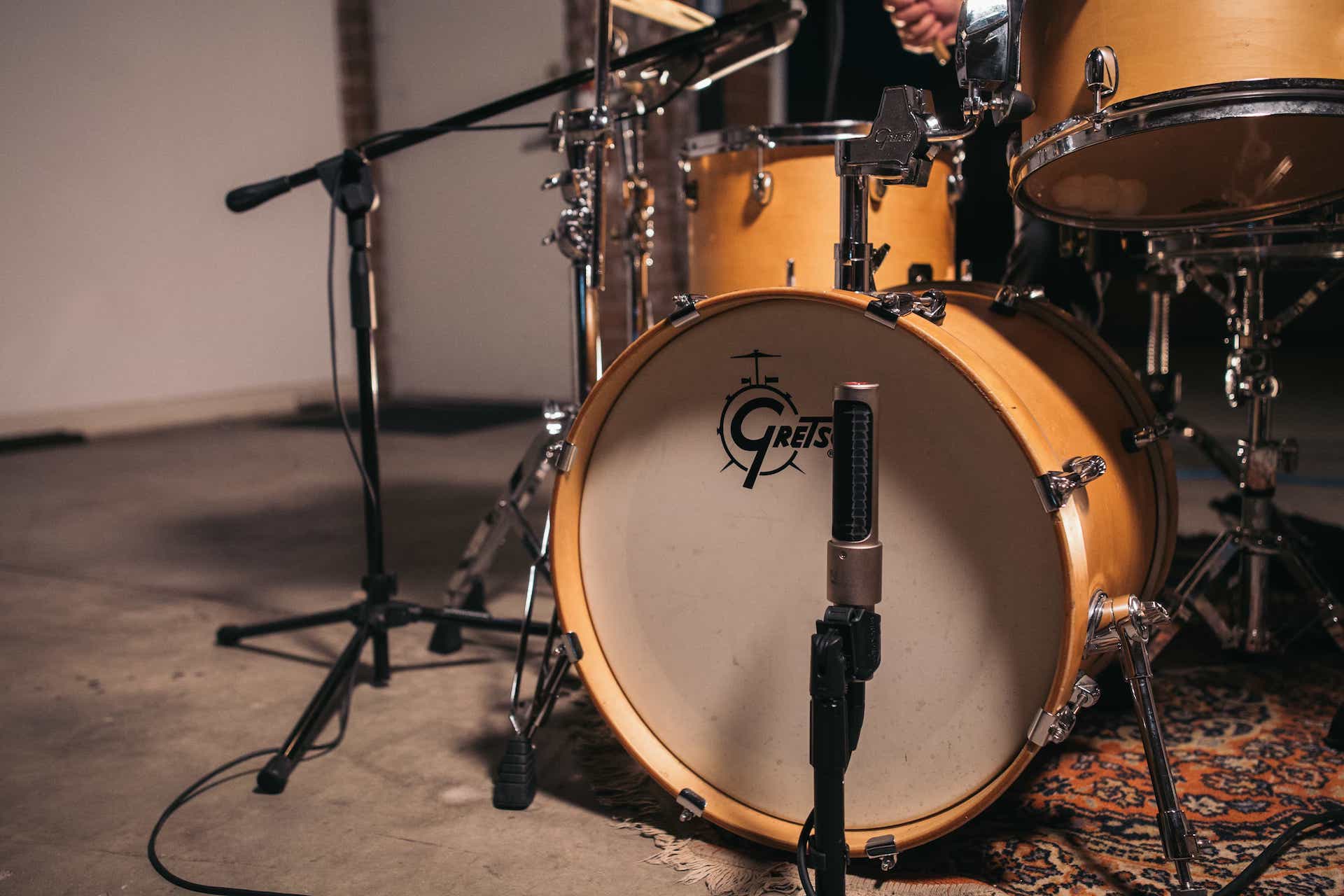
1. Kick Drum
Ribbon mics have captured some of the greatest kick drum sounds ever recorded. When Capitol Records opened in Hollywood in 1956, the main mic on kick drum was the revered RCA 44. Ribbon mics are a surprisingly great choice to record kick drum, and it is the special ingredient in many engineers’ mixes.
A popular method for recording kick drums in the early days of the 44 was to lay it on a sandbag inside a kick drum that had its resonant head removed. The wind blast from the kick drum would pass over the ribbon without damaging it. This was a popular technique to capture the pure tone of a kick drum.
AEA’s modern ribbon mics have a resonant frequency so low that virtually no other ribbon microphone can capture as much low end. The significant proximity effect of some AEA mics make them exactly what you need to build a huge kick drum sound.
Big ribbons contribute a pillowy, soft and natural sound to kick drums. For country music, folk, jazz or even rock, a ribbon mic is the perfect choice to capture a desierable low kick drum sound. When recording kick, always ensure the mic is never directly in front of the porthole of the kick drum. Use the Hand Test to avoid damage from blasts of air on the ribbon element.
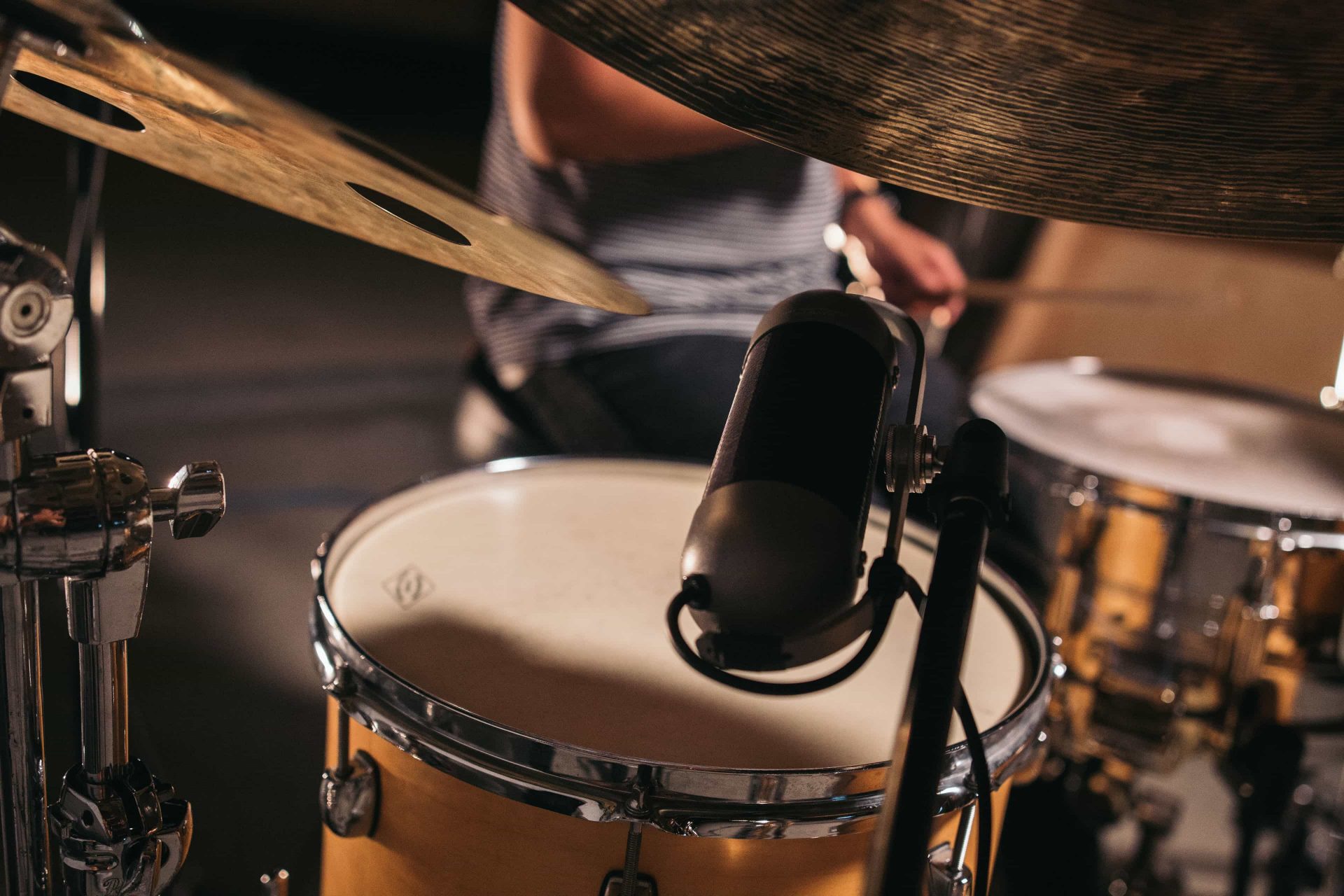
2. Toms
Toms are often miked with ribbons, made popular in Nashville by Grammy-winning engineer, mixer, and producer, Vance Powell. Like kick drums, the low end in toms are almost too perfect for a ribbon. The most difficult part when using a ribbon on toms is positioning it in a way where the backside of the mic won’t pick up the ride cymbal and crashes.
A popular technique on floor tom is to place the mic about an inch away from the tom, under the ride cymbal with the top null pointing up at the cymbal. Position the mic slightly angled at 45 degrees with the ribbon pointing toward the tom.
The low end can sound huge, the top end is smooth and, most importantly, the small amount of bleed when positioned properly is very pleasing. Some dynamic microphones pick up bleed from the hi-hat and cymbals that can sound very harsh and bright, forcing the engineer to have to unnaturally gate the tom mics. When a ribbon is positioned correctly, the bleed can add depth to the sound of the drums.
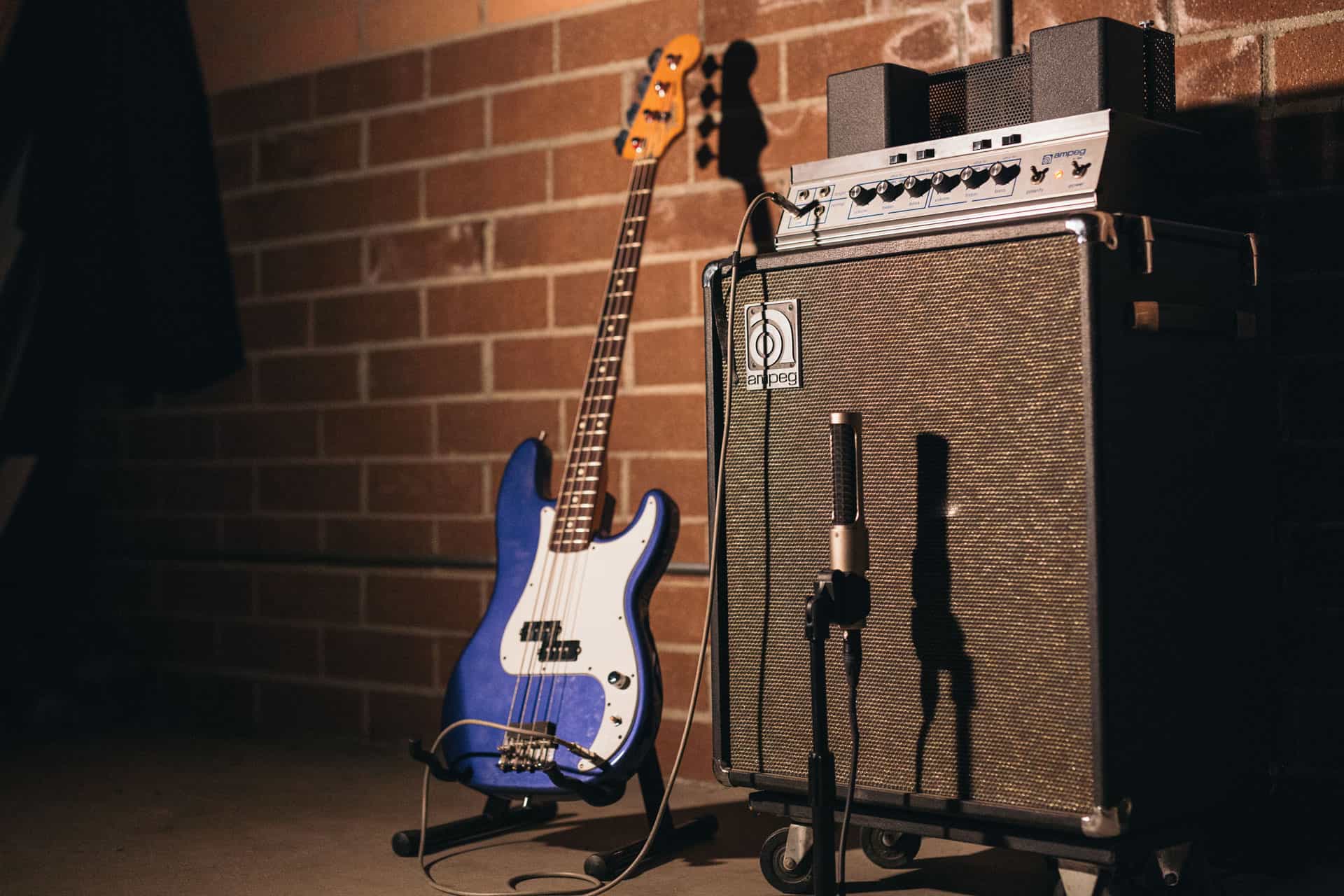
3. Electric Bass Amp
Like kick drum and toms, electric bass has a ton of low end and one of our ribbons can be the perfect fit. As bass player and producer Justin Meldal-Johnsen (Beck, Air, Nine Inch Nails) says about his AEA N22 on his Ampeg B-15N amp: “My N22 has turned out to be an incredible bass amp mic…to such an extent that I won’t record bass without it.”
The N22, a compact near-field ribbon, is the perfect mic for electric bass when recording bass up close because of its balanced sound from only two inches (5 cm) away. It captures a perfect image of both the low-end and the top-end of the bass, helping it fit right into the mix. Its secret is balanced proximity effect from up close.
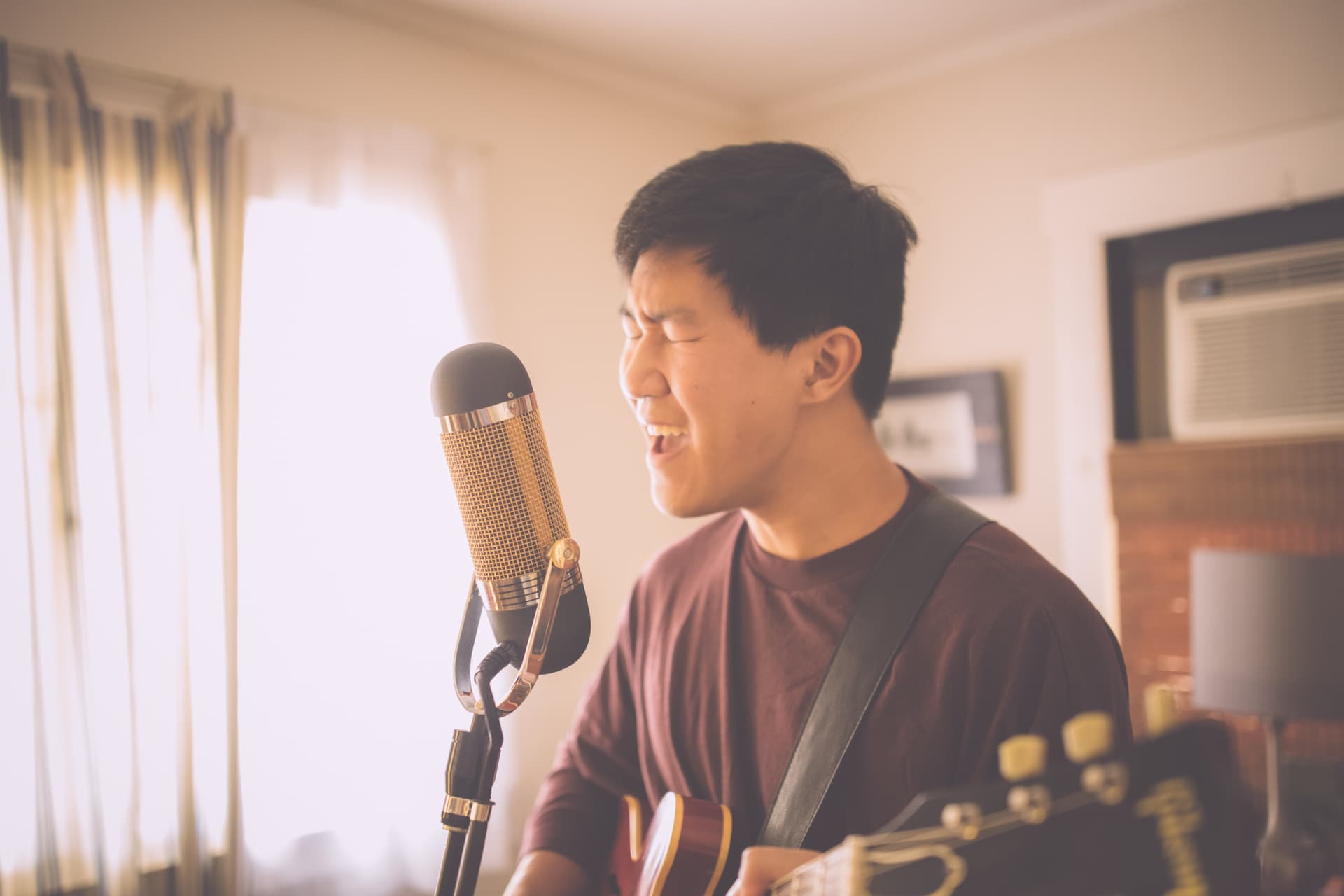
4. Yelling, Screaming, and Loud Vocals
It is understandable that many musicians and engineers hesitate to put a ribbon microphone in front of a screaming, yelling singer. Because of deeply seated myths, they often believe all the screaming will somehow hurt the ribbon. Of course, this couldn’t be further from the truth!
A ribbon on a screaming singer is often the exact microphone to use because it will help tame their harshness and sibilance. AEA ribbon mics have a higher SPL than most condensers, so there is no worry about how loud or how close the singer is to the ribbon. Many near-fields like the KU5A, N22 and R92 can take a singer eating the mic and sound just fine.
The only thing to watch out for is wind blasts. With most of AEA ribbons, we recommend using a pop-filter for vocalists. This will also protect the ribbon from sudden blasts of wind.
The Bottom Line
The bottom line is ribbon microphones sound good on ANYTHING. Don’t be afraid to try one in an unusual way. You might be pleasantly surprised with the result.


